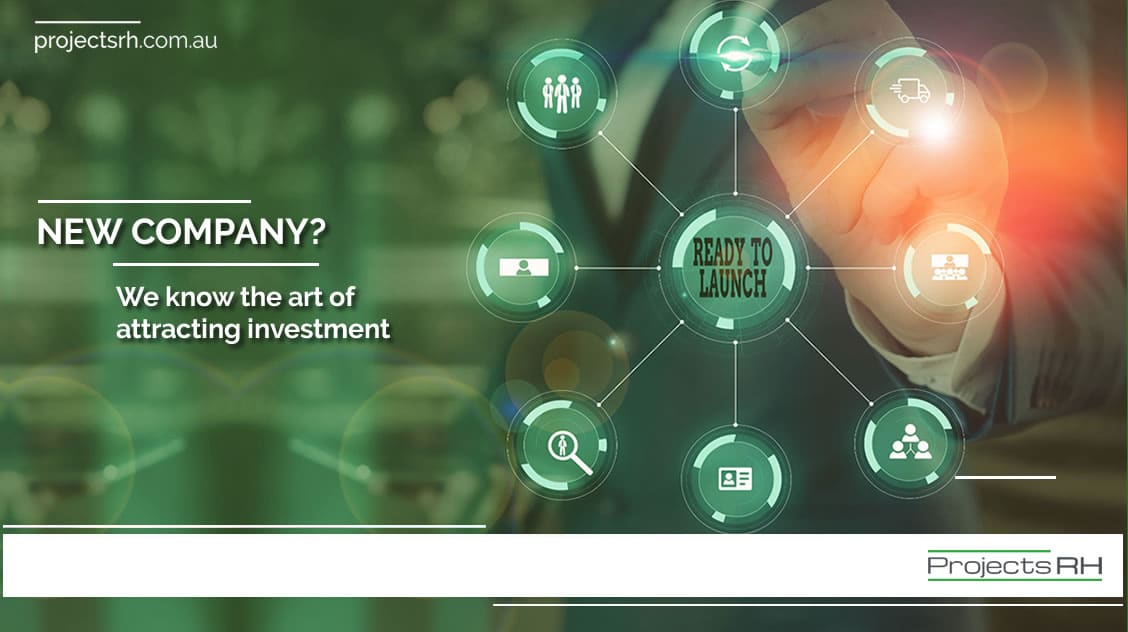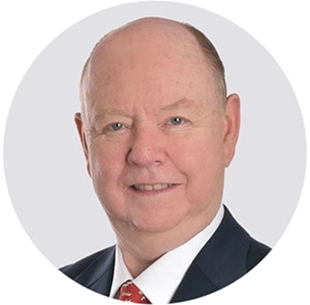Introducing a new company to the market has a number of stages and needs to be well-planned.
In introducing a new company, it is important to remember that investors care about the people behind the company or, more importantly, those who will make it deliver.
They need to ensure that the people they entrust with their money are more committed than they are, and given its their money, theyu2019re pretty committed.
Investors need to understand that there is a marker for what is proposed and it is affordable.
It is also important to remember that at all stages the company belongs to its shareholders, its board, and its founders.
The role of Projects RH will vary over the life cycle of bringing the company to the market or fulfilling the dreams of its founders.
Projects RH works with its clients, and our strategic partners, to introduce potential investors or lenders to exciting projects and opportunities.
Our core business is we connect projects & money. Our work extends across national borders because we seek for our clientu2019s investors who will assist with the business as well as invest.
By introducing a new company to investors or buyers of its products/services, our role is one of communications, whilst accounting may well be said to be the language of money, it is by its nature backward-looking.
Attracting investment is theu00a0lingua francau00a0of applied finance and a very different journey.
Putting first things first
A new company has no history of track record. So, itu2019s essential to think why is the company being introduced.
Invariably the company is being introduced to the financial markets to raise money so that it can undertake and complete its mission.
We need to establish why we are doing what we are doing before we work out the mechanism.
Effectively, the founders of the company are seeking to raise money.
At each stage of the journey they need to be ready to focus on the deliverables and, where necessary, reshape team.
No doubt the early investors will want a say in the board and management of their money.
Down the track new investors may still want board representation and even insist on appointing some of the consultants.
Quickly, the founders and their directors need to see the company from the perspective of the new investors. They need to be told three things:
- what is the opportunity / what is the problem?
- how can the company benefit from the opportunity / how does it solve the dilemma?
- whatu2019s in it for the investor.
Whilst this may sound simplistic, but it is how the world works.
The money journey
Whilst no two journeys are the same, they tend to follow similar patterns:
- The founders have a bright idea, work on it and fund it themselves. Many founders we deal with have quit their job to follow their dream. Investors respect this.
- The founders reach out to family, friends and associates. In short, their personal network. Unfortunately, sweat equity will not be enough. Even angel investors want to know that other people have spent money getting the idea into a potential product/service.
- The new company reaches out tou00a0pre-seedu00a0funders such as venture capitalists and sophisticated investors, generally raising up to AUD 500,000 whilst developing the prototype. Generally, this funding comes from early stage venture capital funds, individual venture capitalists and the foundersu2019 network.
- The business then involves third parties to assist them to raiseu00a0seed capital.u00a0This is generally up to AUD 2m with a commitment to do something material with the idea within 9 to 24 months.The investors are normally sophisticated investors and venture capital early-stage funds, generally require that the company put aside $800,000 to fund their IPO / trade sale process.
- Many companies do require subsequent raises, which in research-based products -including IT, medicines, fin techs, biotech- raise series A. The major source of such investors is specialised funds.
- Some companies requireu00a0series Bu00a0funding round.u00a0The major source of such investment is sophisticated investors and specialised funds.
- Other companies who are looking a global market will do beyondu00a0Series B.
- IPO / Trade sale.
Communication is the key
At each step communication is the key. The message must be clear, concise and simple.
It must be credible.u00a0 The founders, the team, the consultants and the board each need to be themselves.
What is critical is that they are authentic -they donu2019t need to be Steve Jobs lookalikes.
Investors, when they invest in a company with no track record are investing in people. They want to know the people they see are people who will deliver the outcome they promise.
People who have delivered start-ups before are key assets. In short, Projects RH does not commit to deliver the outcome u2013 this is what our clients do, therefore, it is our clients which need to sell their ideas to the market.
Communicating to the market is a holistic experience.
Investors want to understand and will check first with the Internet and then with peers and friends.
Our founders and clients need to have:
- good websites with clear information about the company and its industry
- articles u2013 written by the founders and the team
- blogs
- news clippings
- personal and corporate LinkedIn accounts which are consistent and only focus on the company and their role with the company
- personal LinkedIn accounts should be with blogs and articles about 1/3 :
- company
- industry
- personal LinkedIn accounts should be with blogs and articles about 1/3 :
- other
- regular tweets which show they know whatu2019s going on in the industry.
- Facebook accounts which donu2019t detract from the message.
Whilst the company and its team are in selling mode, they should be apolitical and avoid becoming involved in any controversies.
For most founders this is relatively easy as they are focused on their vision.
u00a0
Projects RH role
Projects RH acts like a company member or hired CFO/Treasurer, and where appropriate supported by a strategic partner, prepare the support documents, and assist the directors with their applications.
Projects RH works with a series of strategic partners to assist its clients on their journey. Firstly, what we do ourselves is:
- prepare financial models
- create information memoranda
- organise business plans
- draft pitch decks
- investor deck
- craft teaser documents u2013 1-page summaries.
- Introduce in-house digital marketing specialists u2013 presentation is as important as content so we need to use digital marketing to enhance what we do.
- Our job is to ensure our clients stand out from the crowd and their story is listened to.
Depending on the client we introduce people who can assist them from other strategic partners which include:
- credit providers
- financial planners
- accounting and tax advisers
- legal professionals
- engineering advisers
- board selection consultants
- Independent experts for report writing
- film and video consultants
crafting your image:
- website enhancements
- digital imaging
- story writing and publishing on the Internet
- speaking engagements
- selling the story
The Australian Model
In Australia, once an idea is generating revenue, existing investors become keen to see more funds raised to expand the opportunity and often increase the product range but most importantly, where it is marketed.
These investors generally remind the board that of the recent $2 million that was raised, $800,000 was put aside to fund a trade sale or an IPO.
This means they have patiently allowed $1.2 million to be invested in the productu2019s early commercialisation over 9 to 24 months and now itu2019s u201cpaydayu201d. Itu2019s time to go to market.
For most of our clients, we have continued to work with them so we have audited accounts which are less than eight months old and we are ready to prepare the documents for the next step in the journey.
Projects RH is not a stockbroker and does not hold an AFSL which would allow it to offer securities on behalf of the company to the public.
We team with a transaction focused stockbroker and generally seek to raise the minimum allowed to gain listing on the ASX.
Currently this is AUD 4.5 million net of costs associated with the raise.
The question is why? The answer is the existing shareholders including the founding shareholders generally intend to stay with the company for the next 3 to 5 years and they wish to achieve minimum dilation.
They generally believe these additional funds normally expended on marketing and subsequent product development will achieve the greatest value for the other shareholders.
Subject to ASX escrow rules founding shareholders can exit either at the time of the IPO itself or progressively over the next three years.
2020 events effect
At Projects RH we are often asked in the post-Covid world have things changed?
The answer is yes and the answer is no.
How we do so many things has changed yet deep-down people are the same.
At projects RH our view is that investors invest in people -the founder and the team.
How they meet the team is now via videoconferencing, videos and their presence on the Internet.
More importantly though what is sent them as the one-page teaser, the presentation and the information memorandum (supported by financial model and the business plan) are increasingly read first.
We are encouraging our clients to make at least two videos -the first is less than three minutes and is about who we are and what we do.
The second runs in parallel with the slide presentation. The slide presentation should be no more than 16 slides of which 12 are the story.
This needs an accompanying video which runs for 15 to 20 minutes. This is the modern equivalent of u201cwill be reviewed 30 minutes over a cup of coffeeu201d.
The next step is 30 minutes over videoconferencing; we talk through the slide pack.
We believe that quality at each level of capital raising is essential as the earlier stories remain not only in peopleu2019s minds but in the Internet for ever. u00a0
Covid-19 has slowed some processes and has made investors more judicious in their investment.
They are looking for determined leaders who can deliver whilst being frugal with their money.
u00a0
Change of emphasis
Prior to Covid-19, at projects RH we focused on preparation of the pitch deck and is presentation by our clients.
This meant we had the meeting u2013 that 30-minute window. Generally, it was meant for a wide audience or a large presentation such as you would give a Professional Investor.
It was our 12-slide overview u2013 what is the problem, how do we address it and whatu2019s in it for the investor.
Like Professional Investors presentations, it was meant for a wide audience who didnu2019t necessarily know the sector. It relied on a face-to-face presentation.
Itu2019s now 2020 and our focus is global, and we need to focus on what we send, generally by email, before we have our one-on-one video meeting.
This creature is called an investor deck. It is not new but its role in the post-Covid world is critical.
It can stand alone and needs no personal presentation. It explains why the client company is special and can deliver its promises.
It focuses on the ability to deliver a detailed market strategy, the skills of the team to deliver, and is a business focused document.
It is more clinical in explaining what investors will receive.
Right beside you
At Projects RH work with our clients to achieve their goal which may need some shaping. u00a0
We are seeing that companies are looking to expand their working capital base as a take on new opportunities associated with the post Covid-19 world.
In introducing new companies to the market our job is to ensure, as best we can, that the company and its team are shown in the best possible light, and communicate their ability to deliver a clear vision in a timely and cost-effective way to a client base which is identified and can afford and wants the product.
In seeking investors at each stage of the companyu2019s life-cycle we assist the team to show what the company promises is feasible and it can deliver.
We walk with our clients on their journey, not ahead, not behind, but beside.
Paul Raftery u2013 22 July, 2020
Bridging the gap between business and capital
From concept to investor-ready
We ensure your project resonates with the market, delivering the confidence investors need to move forward.




